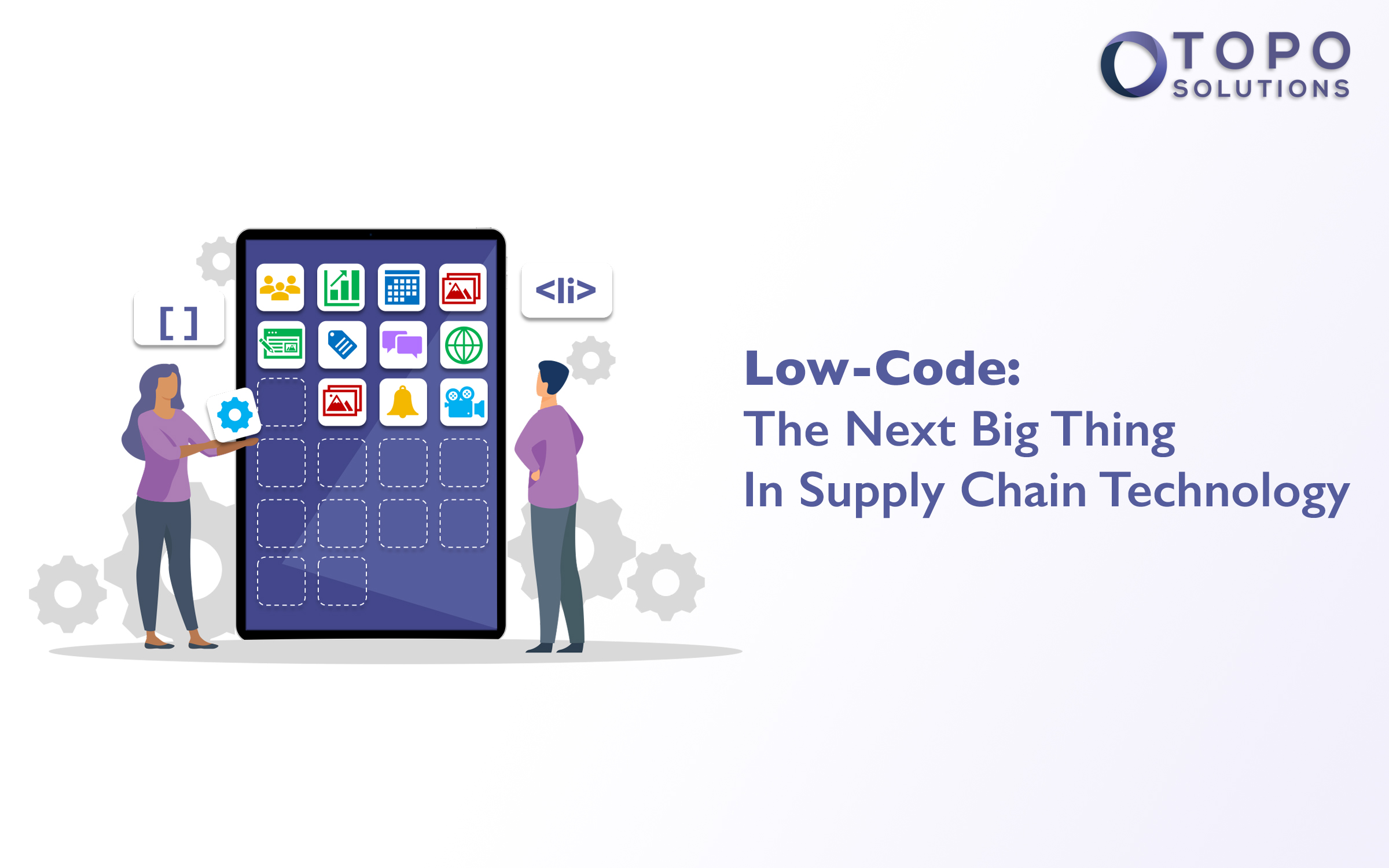Request a Demo
Trusted by leading brands, retailers, manufacturers and service providers across industries such as:
















Innovation moves at enormous speed, but most vendors and enterprises struggle to keep up. As your business needs to adapt, your software can lag behind, leading to missed opportunities. This is especially true in the supply chain, which is under constant pressure from:
Digitization by itself is no longer enough. Organizations need access to intelligent data and meaningful insights to plan for and react to these changes—that demand greater transparency throughout the supply chain.
Moving to a low-code or no-code supply chain platform will significantly increase speed while reducing costs. Aligning supply chain software with your business’s need for innovation lets you adapt to the market faster and compete in ways that have not been possible before.
The process of customizing your supply chain software to work in a particular way is challenging. It typically involves:

Source: iStock
An inefficient supply chain software change process results in challenges for your business:
“Traditional coding refers to working with an entire team of developers and programmers to gather specific requirements, develop a plan, and work with a development team to create custom code for an application to meet the specified needs. Although the traditional approach is an acceptable method, these projects are often complex, expensive, and are delayed due to multiple factors: Software coding errors, inaccurate estimation, testing challenges, and infrastructure delays.”—Marutitech: No Code/Low Code vs. Traditional Development
Fortunately, there is a better way—using a low-code supply chain software platform like Topo.
Low-code and no-code platforms make it much easier for customers, end-users, in-house IT teams, and other stakeholders to manage their software in a more efficient and streamlined way. Here’s how they work:
Low-code and no-code platforms do run on code, it’s just that the end-user doesn’t need to use that code. Instead, vendors create low-code environments that hide the detailed code behind simple interactions and interfaces that customers are already familiar with.
No-code and low-code platforms are slightly different. A no-code platform typically requires no knowledge of coding at all, while a low-code platform will often need a little coding and development input to get the most out of the environment. For convenience, we’ll refer to both as “low-code” in the rest of this article.
Low-code platforms are becoming popular across the tech industry:
The growth of low-code platforms is revolutionary. It gives customers much greater insight and control of the software they use and promotes accessibility and accuracy throughout the supply chain. In particular:
All of this accessibility and control means you will need to introduce strong project management and good team and stakeholder communications. This will help you avoid:
All of these areas can be enhanced through good development processes and governance.
The world of business is constantly changing and brings complex problems to supply chains. Fast-changing laws and regulations, evolving consumer behavior, fluctuating economic conditions, geopolitical tensions and the COVID-19 pandemic all have an impact. To be agile, efficient and profitable, companies need to overcome such problems quickly—in our experience, most enterprise and supply chain software in the market cannot keep up with these complex demands.
That’s why we designed Topo as a low-code platform that lets businesses adapt to changes quickly and with minimal costs. Topo empowers organisations with complete control over their data and insights, an intuitive way to navigate complex problems, and adaptability that provides a competitive advantage.
Our complete low-code platform lets you develop however you want:
Whether in-house or with our support, implementation is way faster and easier with Topo’s low-code environment. Compared to slow and cumbersome enterprise software, Topo’s low-code platform is truly agile and user-friendly. Topo already provides a huge amount of in-built functionality, out of the box. You decide whether you want to build digital tools for your supply chain yourself, start with our support, or let us do all the work for you.
Topo is unique in providing the only reliable, low-code app builder platform for the supply chain industry. Our low-code platform makes it easy for customers to customize and create their own apps, interfaces, integrations, and configurations across the following areas:
Topo’s App Builder helps you to create customized interfaces and workflows for your supply chain processes. You can easily access and use a huge variety of features and create custom applications that match your business needs.
Topo is a complete low-code solution that provides you with all the features and functionality that you need to adapt to the unique requirements of your supply chain. You can easily build apps, workflows, dashboards, reports, and more with no coding.
You can design, build, and customize every tool, form, or report to your exact specifications. That includes easily incorporating changes and lessons learned into your apps at any time, without needing to rely on external development or support teams.
You’re not restricted to any preset UI, layout, or workflow. You can customize the user experience based on user interviews, collaborations with other stakeholders, best practices, and reviews.
You can drag and drop a wide variety of fields and functionality, including customizing, validating, and calculating fields for your needs.
Set custom logic and formulas on fields and objects to facilitate conditional formatting and further workflow management.
Fields and objects can be formatted and dynamically altered based on set logic and formulas. For example, Topo can automatically calculate the result for an activity based on entered data and the result field can be formatted according to the different outcomes.
Users can configure in-app and email notifications, alerts, and reminders on tasks based on set inputs and logic. Actions and processes can be automatically triggered based on custom workflows. You can also automate data transfers and exchanges with other systems.
You can easily set permissions for all users for many aspects of your apps and limit development, use, or functionality to specific users and roles.
Every field in the Topo platform, including your own applications, can be linked to dashboards, reports, and analytics. This includes our “Insights” functionality that lets you analyze your data and make timely and accurate business decisions.
Our supply chain experience and customer insight mean we’ve already developed many ready-to-go templates and libraries for your own use cases. You can implement our extensive library assets as is, or use them as a starting point for customizing your own apps.
Our easy-to-use interface means you can create powerful applications completely in-house. This gives you a great deal of agility and speed to create, test, iterate, and release apps.
You don’t need to be a developer or engineer to take advantage of Topo’s apps. The days of deploying large development teams and dozens of consultants are long gone. All it takes is a consistent and logical approach, and the ability to interpret business processes into an application.
Every supply chain is different, so the Topo app builder gives you powerful control over industry-specific fields. For example, measurement fields for clothing and apparel or chemical tables for lab testing.
You decide on what you need your apps to do. From simple information gathering apps to complex design structures, the app builder can handle it.
Topo provides extra functionality across multiple areas:
The introduction of low-code platforms means you have a choice to make. Do you rely on the slow, involved process of working with a traditional enterprise vendor, or do you make supply chain management faster, more agile, and cost effective? We think the answer is clear.
Talk to us today about how Topo can transform your supply chain, boost your business, and give you a competitive edge.